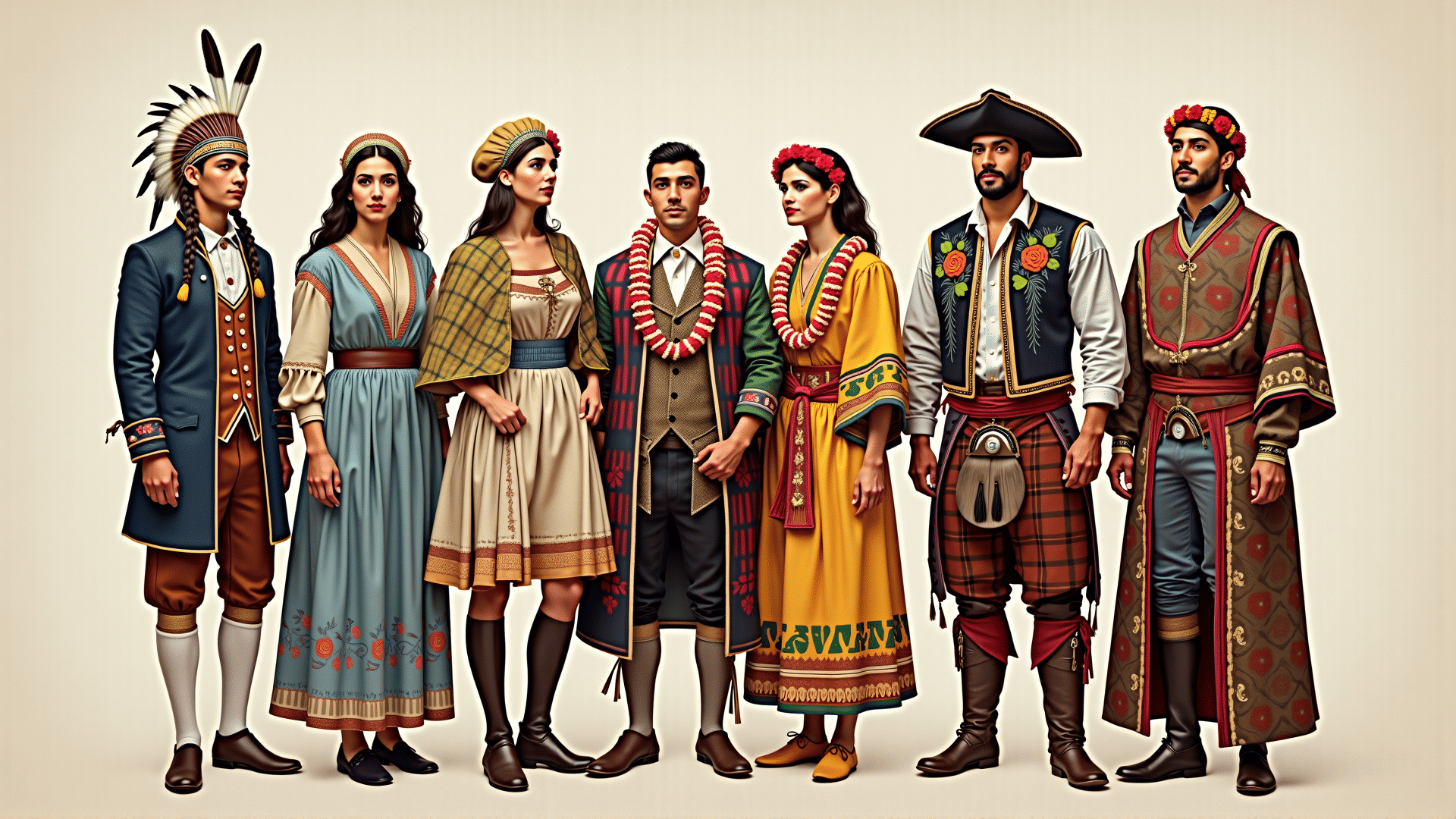Traditional attire across America embodies the rich cultural tapestry of various communities, each reflecting historical influences and unique heritage. From the intricate beadwork of Native American regalia to the vibrant colors of Caribbean-inspired garments, these costumes provide insight into the history, values, and creativity of their respective cultures.
In the southwestern United States, Indigenous cultures such as the Navajo and Hopi are renowned for their detailed and symbolic clothing. Navajo attire often includes elements like woven blankets and bolo ties, while Hopi dresses are marked by their katsina imagery, signifying spiritual and cultural narratives. These garments are not only beautiful but also serve as a living history, passed down through generations.
The Southeast is home to Gullah culture, with its roots in West African traditions. The Gullah people, primarily residing along the coastlines of South Carolina and Georgia, celebrate their heritage through colorful dresses and headwraps, often in patterns that convey cultural stories. This clothing is often showcased during festivals and community gatherings, highlighting its significance in preserving identity and tradition.
In the Midwest, German and Scandinavian communities preserve their heritage through traditional clothing worn during festivals like Oktoberfest and Midsummer. German lederhosen and dirndls, with their distinct embroidery and structure, are often seen during these events. Similarly, Scandinavian folk dresses, with their embroidered aprons and bright colors, reflect the region's historical ties to Nordic traditions.
Moving to the Pacific Northwest, the thriving Alaskan Native communities, like the Tlingit and Haida, incorporate ceremonial attire with bold colors and intricate designs. These often include copper regalia and Chilkat blankets, which are crafted with precision to indicate clan membership and social status, becoming treasured heirlooms.
The Southwest also stands out with its influence from Hispanic and Latino roots. The Cinco de Mayo and Día de los Muertos celebrations highlight Mexican cultural attire featuring vibrant colors and detailed embroidery. Charro suits and folklorico dresses, with their swirling skirts and ornate designs, are emblematic of Mexican enthusiasm and heritage.
Caribbean culture, particularly prevalent in cities like Miami and New York, embraces attire that incorporates bright hues and detailed craftsmanship, with garments often adorned with beads and feathers. These costumes are predominantly seen during Carnival celebrations, signifying the joyful spirit and endurance of Caribbean traditions.
Each of these traditional attires tells a unique story. They act as a bridge between the past and present, allowing new generations to connect with their ancestral roots while adding contemporary twists to traditional designs. Wearing these garments is not just a nod to heritage; it is an expression of identity and pride in the cultural diversity that enriches the fabric of American society.
In summary, traditional attire across America is a vibrant showcase of the cultural diversity and history that defines this nation. These garments are not only artistic expressions but also meaningful symbols of the unique heritages that contribute to the American mosaic.
